Hey, are you a tech geek who loves to read books? Are you a beginner in the field and want to increase your knowledge? If so, then you are at the most useful guide that will highlight here the 15 best electronics books of 2024. Electronic books are a great source to learn about the latest technologies in today’s world.
15 Best Electronics Books for 2024
You can improve your ability to assess and resolve issues with electronic systems by reading about various circuits and devices. Increasing your knowledge and learning new things is always necessary to stay up to date in any occupation.
Here we have discussed the best electronic books that will be beneficial for beginners as well as experts. These books can be a great approach to advancing your technical expertise and can be quite advantageous for both your professional and personal development. So, let’s get started.
1. Make: Electronics: Learning by Discovery
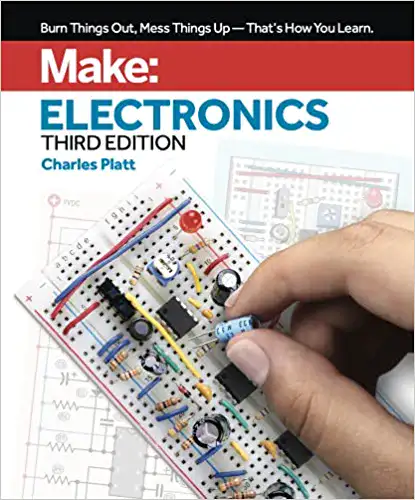
For the beginner electronics enthusiast, “Make: Electronics: Learning by Discovery” offers a hands-on introduction to electronic circuits. This book is written by Charles Platt that supports readers in learning by exploration and offers a thorough introduction to the field of electronics.
The experiments that make up the book’s structure gradually introduce important ideas and methods. Each experiment includes thorough directions and explanations, as well as pictures and images to help readers follow along.
Readers will gain knowledge on a variety of subjects throughout the book, including circuit design, electronic components, and microcontrollers. Additionally, they will have the chance to construct and evaluate their own electronic projects and circuits.
In addition to its short and straightforward explanations, “Make: Electronics” provides a wide range of tools and resources, including interactive quizzes and a companion website with additional information.
2. Encyclopedia of Electronic Components
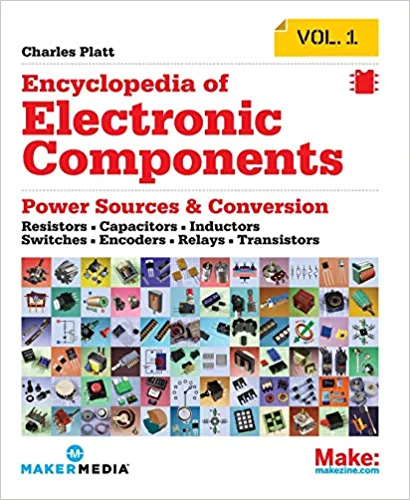
For anyone working with electronic components, the “Encyclopedia of Electronic Components Volume 1” is an incredibly thorough and helpful guidebook.
Each section in the book provides comprehensive details about a specific component, including its function, qualities, and applications. The book is arranged alphabetically. The entries come with helpful images that make it simple to grasp how each part functions.
The detailed examination of each component is one of this book’s core advantages. The book offers fundamental knowledge as well as useful advice on how to choose and use each component in a circuit.
Ultimately, anyone working in electronics will find the “Encyclopedia of Electronic Components Volume 1” to be a great asset. It is a reliable resource for any information about electronic components. It is essential for both students and professional experts.
This book, along with “Make: Electronics,” should be purchased together so that you will have useful resources to turn to while learning. Since both are very informative and well-written.
3. The Art of Electronics
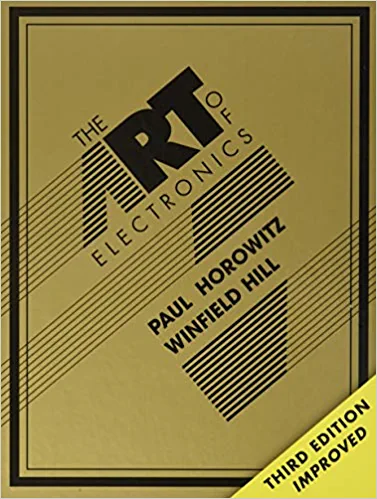
A comprehensive guide for electronic circuit design and analysis is “The Art of Electronics”. This book, which has been co-written by Paul Horowitz and Winfield Hill and is now considered to be the industry standard for both professionals and students studying electronics, is a masterpiece in the subject.
Ohm’s Law, Kirchhoff’s rules, and linear and nonlinear devices are just a few of the concepts covered in the book’s complete introduction to the fundamentals of electrical circuit design. Operational amplifiers, digital electronics, and microcontrollers are just a few of the complex subjects that are covered after that.
The brief and simple explanations in this book make even difficult topics understandable, which is one of its virtues. To aid readers in understanding the subject matter, the book also contains a tonne of examples, activities, and images.
For anyone interested in learning about electronics, this best electronics book for beginners is a paramount resource. It is a thorough and easy-to-read manual that will be helpful for both newcomers and seasoned experts.
The straightforwardness and ease of access that contributed to the success and popularity of the preceding editions are still present in The Art of Electronics. For everyone working with electronic circuits, whether a student, researcher, professional, or enthusiast, it is a necessary reference and the industry standard.
4. Practical Electronics for Inventors
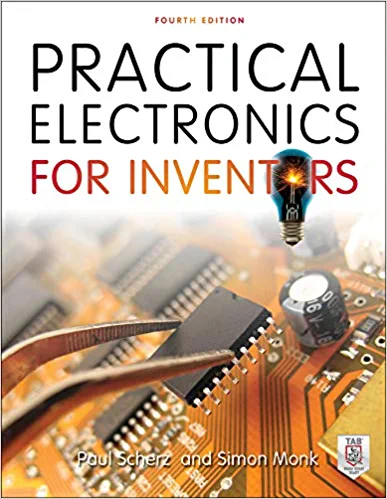
Anyone wanting to create their own electronic projects should find this book “Practical Electronics for Inventors” to be a useful resource.
The first section of the book provides a detailed introduction to the fundamentals of electrical circuit design. This book is broken up into 16 chapters with the theory of electronic circuits including concepts like Kirchhoff’s principles, Ohm’s Law, and linear and nonlinear devices.
After that, a wide range of sophisticated subjects are covered, including wireless communication, microcontrollers, and sensors.
The emphasis on practical applications and projects in this book is one of its most notable qualities. Numerous projects and examples are provided in the book to show how to use the theories and methods discussed there to build useful electronic gadgets.
5. Ultimate Guide: Wiring
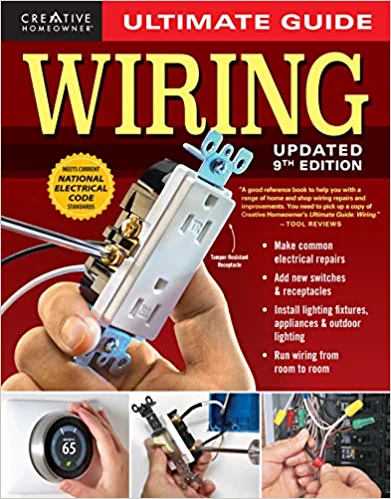
Every electrician must deal with various wiring tasks at work, therefore the “Ultimate Guide: Wiring, 9th Updated Edition” is a complete guide to everything related to electrical wiring.
The book’s concise and clear explanations are among its more impressive characteristics. The ideas are written out in a way that is simple to comprehend, and the accompanying images do a great job of further clarifying the text.
Charlie T. Byers, the author, is an instructor at Thaddeus Stevens College of Technology where he is in charge of and teaches in a brand-new department for house remodeling. And this ninth version of the book includes all the information on the most recent wiring technologies.
The book is quite comprehensive and has been a valuable tool for both inexperienced and seasoned electricians. It covers everything from fundamental concepts to more sophisticated procedures.
6. Getting Started in Electronics
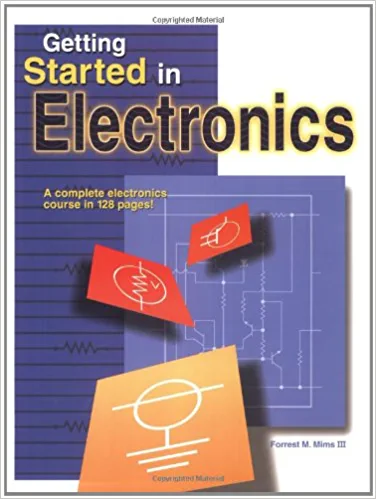
An introduction to electrical circuit design and analysis is provided in “Getting Started in Electronics.” This book, written by Forrest M. Mims III, is intended to give readers with little to no background in electronics a thorough introduction to the subject.
The practical approach of “Getting Started in Electronics” is one of its most notable qualities. The book has a tonne of activities and tasks that let readers create and test their own circuits and devices using the ideas and methods discussed in the book.
This book is a great starting point for anyone interested in learning about electronics. It is an easy-to-read manual that lays a strong foundation for further study and is ideal for newcomers.
7. Electronics All-in-One For Dummies
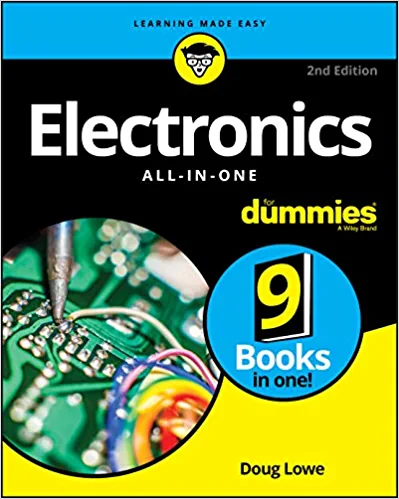
Electronic circuit design and analysis for beginners are covered in detail in “Electronics All-in-One For Dummies.” This book is written in a simple and concise manner and covers a wide range of topics.
One of the book’s best qualities is how it is organized. The book is organized into nine mini-books, each of which explores a certain subject in depth. This makes it simple for readers to focus on the topics that most interest them and obtain the information they need.
“Electronics All-in-One For Dummies” contains a multitude of resources and tools in addition to its straightforward explanations and applicable examples, such as content recommendations, interactive quizzes, and a partner website with additional materials and resources.
In general, this book is a fantastic learning tool for anyone interested in electronics. It is a thorough and user-friendly manual that is excellent for starters.
8. How to Diagnose and Fix Everything Electronic
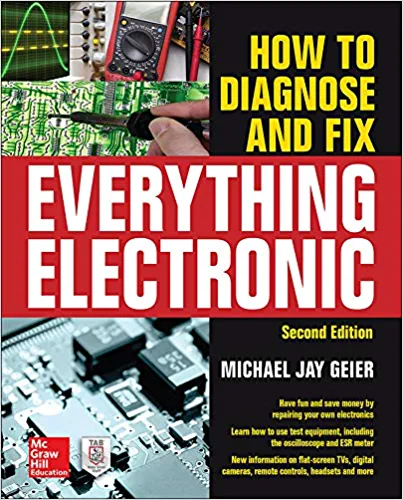
“How to Diagnose and Fix Everything Electronic” is a comprehensive guide to troubleshooting and repairing electronic devices. Written by Michael Jay Geoghan, this book is designed to help people with little electronic experience understand and fix common problems with electronic devices.
It is not for absolute beginners it requires at least a working knowledge of components and soldering. For troubleshooting and repairing a variety of electronic gadgets, including smartphones, tablets, computers, and home appliances, the book offers numerous examples and step-by-step directions.
The fact that this book contains stories is a huge benefit. The author detailed numerous instances of difficult work and how he handled them. Each of these amusing and educational stories serves to demonstrate his approach to troubleshooting.
These tales contain helpful information that will enable the reader to build their own knowledge base and troubleshooting approach within their particular area of interest.
9. Open Circuits
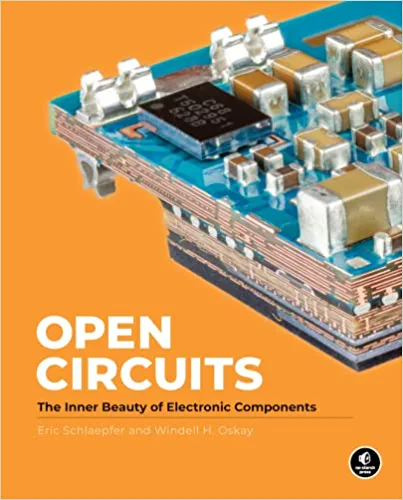
Open Circuits is a photographic adventure that explores the beautiful and complex architecture of common electronics. This book expands a secret world full of beauty, intricacy, and wonder through exquisite cross-section photography.
This research represents the deep complexity and magic of the technology that surrounds us, from circuit boards to processors. Open Circuits is a must-see show whether you’re a tech fanatic or just enjoy the beauty of engineering.
Over 130 electronic components, including resistors, LEDs, USB cables, headphone jacks, stepper motors, and nixie tubes, are transformed into works of art in the book “Open Circuits” through beautiful cross-section photography.
You can learn about how these parts work and were manufactured as you delve into their inner workings of them. This will allow you to not only enjoy their beauty. Electrical engineers, do-it-yourselfers, and fans of art and photography should all check out this book.
10. Beginner’s Guide to Reading Schematics
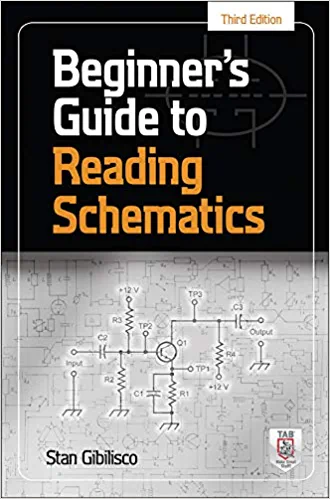
A complete introduction to understanding and interpreting electrical schematics may be found in “The Beginner’s Guide to Reading Schematics.” This book takes a step-by-step approach to teach the various symbols and conventions used in these diagrams. It is designed for people with no experience reading schematics.
Readers will gain knowledge of how to identify various components and understand how they are connected in a circuit throughout the course of the book. In addition, you will learn how to use a schematic to troubleshoot issues and track the path of electricity via a circuit.
This useful, illustrated guide demonstrates how to analyze and produce high-precision electronics diagrams using brand-new artwork and buildable demo circuits.
11. Electronics for Beginners
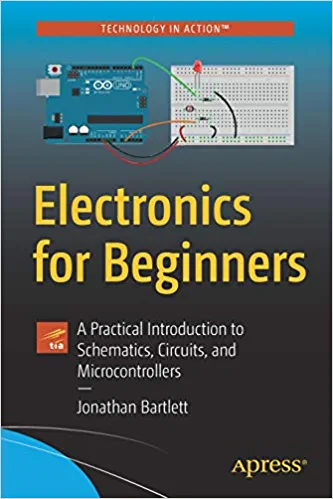
If you want to study the fundamentals of electronics, “Electronics for Beginners” is the ideal resource. The fundamental concepts and abilities required to comprehend and work with electronic systems are introduced in this book in a straightforward and concise manner.
An overview of electronic components and their use in circuits opens the book. After that, it introduces readers to schematics and demonstrates how to understand these diagrams. The book then digs deeper into more complex subjects including microcontrollers, programming, and troubleshooting.
In addition to giving readers a thorough understanding of electronics fundamentals, it also offers tasks and activities that allow you to put your newfound knowledge into practice. This book is a great resource for learning about and working with electronic systems, regardless of your level of experience with electronics.
12. Microelectronic Circuits
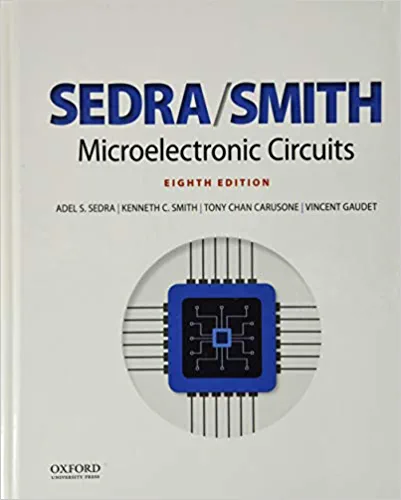
A thorough textbook on the topic of microelectronic circuits, which are a vital aspect of modern electronic devices like computers, smartphones, and other devices, is called “Microelectronic Circuits.” Adel S. Sedra and Kenneth C. Smith are the authors of the book, this is frequently used as a textbook in introductory electrical engineering courses.
This book’s straightforward writing style, which makes it simple to understand even for those who are unfamiliar with the subject, is one of its main advantages. The authors do a fantastic job of breaking down complicated ideas in a way that is simple to understand, and they offer lots of examples and exercises to aid students in solidifying their comprehension of the subject.
Transistors, amplifiers, and oscillators are only a few of the many microelectronic circuit-related subjects covered in the book. Additionally, it addresses more complex subjects including noise, feedback, and stability. Numerous diagrams and pictures are used throughout the text to aid students in visualizing the ideas being covered. Worked examples and problem sets are also provided to allow readers to put what they have learned into practice.
All things considered, “Microelectronic Circuits” is a superb book for students studying microelectronic circuits, and it is highly suggested for anyone interested in a career in electrical engineering or a similar subject.
13. Digital Signal Processing
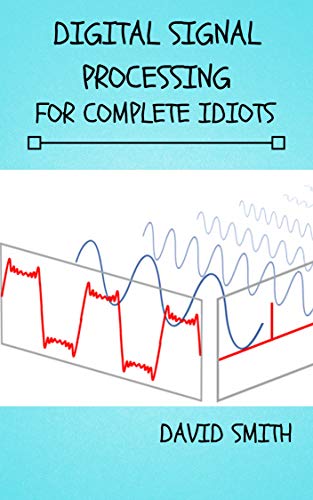
The objective of the book “Digital Signal Processing for Complete Idiots” is to make the study of digital signal processing understandable to newcomers by simplifying difficult concepts.
For people who find the mathematics and technical concepts associated with the subject intimidating, it is definitely an excellent option because it might offer a more approachable introduction to these subjects.
Because of the complexity and technicality of digital signal processing, it is likely that some level of technical ability and mathematical background will still be needed to completely comprehend and grasp the concepts discussed in the book.
14. Electrical Engineering 101
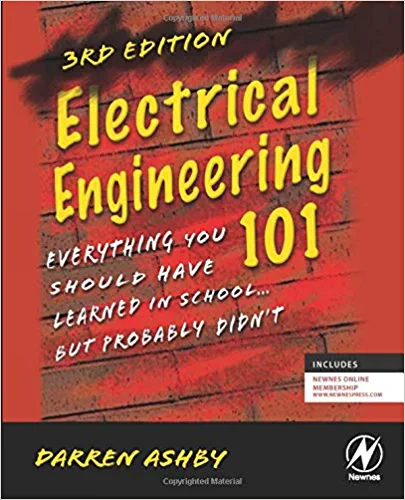
This “Electrical Engineering 101” practical approach, which focuses on the practical applications of electrical engineering principles, is one of its main advantages. With chapters on tools and troubleshooting, the book equips students with the abilities and information they need to develop and maintain their own electronic design projects.
The book begins by answering the fundamental question, “What is electricity?” and then proceeds to clearly and simply describe the main ideas and elements of electronic systems.
“Electrical Engineering 101” goes more deeply into the underlying ideas and theories that shape the behavior of electronic systems than other books that merely give instructions for building electronic circuits.
The content of the book is presented in a simple manner that makes it understandable to readers of all reading levels and defines technical terms and concepts as they are introduced.
15. Understanding Basic Electronics
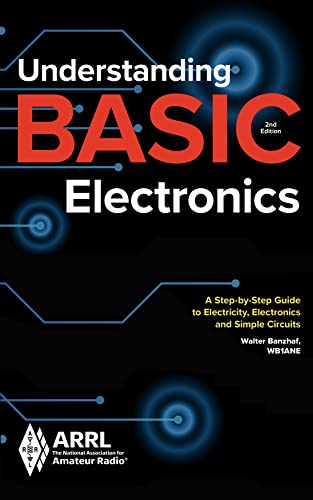
Anyone interested in learning further about electricity and electronics can check out “Understanding Basic Electronics”. In order to make the study of electronics interesting and pleasant, the book is written in a friendly and simple manner that is appropriate for beginners and nontechnical readers. It also includes clear graphics and real-world examples.
The compact module style of this book, which enables readers to readily consume “bite-sized” pieces of information, is one of its distinctive qualities. This makes it a fantastic tool for those who prefer to learn at their own pace or who prefer to concentrate on particular subjects.
This book includes a part on digital electronics in addition to the basic principles of electronics, giving readers a thorough understanding of the subject. The book also includes a number of little “kitchen table” tasks that readers can complete to obtain first-hand experience, which helps to bring abstract concepts to life.
Conclusion
Overall, all of these books will be a vital help for you whether you are an electronic student or professional. All of these have their own unique writing style and each of these books aim to teach you a specific type of electronic skill.
If you are inserted in understanding complex circuit problems you must need “Make: Electronics: Learning by Discovery“. And for all kinds the basic components information you can refer to “Encyclopedia of Electronic Components Volume 1“. To solve various wiring tasks you have to make this book “Ultimate Guide: Wiring, 9th Updated Edition” your companion.
In conclusion, I would just like to say it does not matter which book you prefer we assure you you will not regret reading any of these books.


